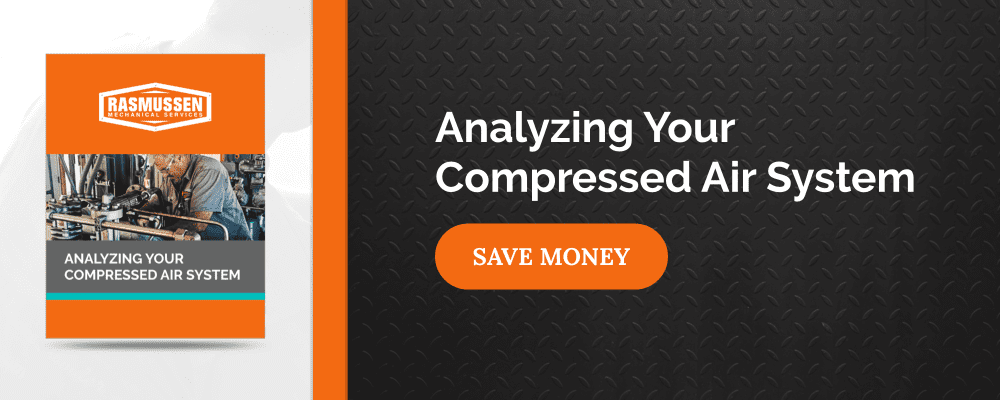Commercial air compressors require regular maintenance. This not-so-foreign concept is often underestimated. Those that overlook consistent care of their systems incur higher energy, repair and replacement costs. The cost of a good preventative maintenance program will be less than the costly expenses of air compressor repairs and unplanned outages. Below we have accumulated a few cost-effective air compressor maintenance tips.
Check out these tips for saving money in your compressed air systems:
1. Keep an organized maintenance program in line with the manufacturer’s specifications.
Sounds obvious, right? Unfortunately, busy seasons or neglecting daily routines can lead to scheduled maintenance oversight. Proper maintenance requires daily, weekly, monthly, quarterly, semi-annual and annual procedures, according to the U.S. Department of Energy. Missing scheduled maintenance one day has a snowball effect. Days turn to weeks and weeks to months, meanwhile, your expensive and important machinery is slowly working away from the manufacturer’s recommendations. Baselining the system’s power consumption, pressure, airflow, and temperature can provide a stronger frame of reference to maintain optimal functionality.


2. Change dirty filters.
When air filters are dirty, they increase pressure drop, decreasing compressor efficiency. In other words, they make your equipment work a little harder to accomplish the same tasks. As it works harder, it wears on the internal components and burns more energy.
Take this example from the US Department of Energy:
“A compressed air system served by a 100-horsepower (hp) compressor operating continuously at a cost of $0.08/kilowatt-hour (kWh) has annual energy costs of $63,232. With a dirty coalescing filter (not changed at regular intervals), the pressure drop across the filter could increase to as much as 6 pounds per square inch (psi), vs. 2 psi when clean, resulting in a need for increased system pressure. The pressure drop of 4 psi above the normal drop of 2 psi accounts for 2% of the system’s annual compressed air energy costs, or $1,265 per year.”
3. Fix existing air leaks and prevent new ones.
Another simple concept: if your air compressor has a leak, it will not work as efficiently as the manufacturer intended. According to the Compressed Air & Gas Institute, a quarter-inch air leak at 100 psi will cost you more than $2,500 a year. If compressed air doesn’t get filtered properly, the pipes will clog with dust or sludge, which results in more air leaks due to corrosion.
Did you know: Leaks in a compressed air system often waste 50% of the compressor’s total output? More so, leaks in a compressed air system lead to increased problems in plant operations due to fluctuating system pressure, excess compressor capacity, and decreased service life. All of these scenarios create negative contributions to your bottom line, so how can they be prevented?”
[Check out the Rasmussen Industrial Air Services Brochure for more information on air compressor repair maintenance!]
4. Reuse heat.
The compressed air system itself generates heat as it works. So being able to reroute this heat to support other operations is a savvy way to save money. The heat can be redirected to produce hot water or provide warm air for various rooms within the facility.
A quarter-inch air leak at 100 psi could cost you more than $2,500 a year! Click To Tweet5. Turn it off.
If applicable, turning off the system during evening hours or weekends can potentially spare up to 20% of energy costs. It also will save the system from continuous power and work, lengthening the life of parts within.
It is important for any company to keep operations as cost-effective as possible and spending the money on the front end can prevent further expenses. Many of these tips are standard procedures for the industry. If you need any help, contact your single source provider here.




